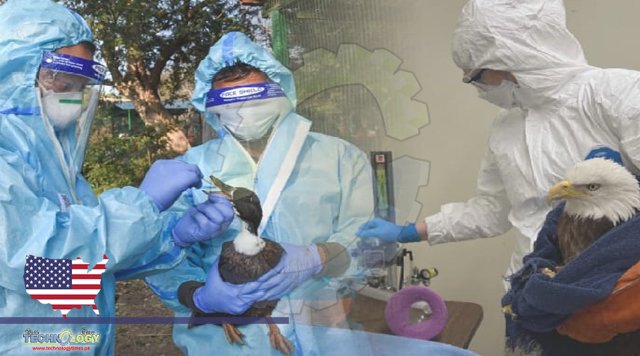Fall Migration, Zoos, bird rescue groups and other animal facilities are grappling with a “radically different” outbreak of avian influenza.

When a highly contagious strain of avian influenza began racing across the United States this spring, the Raptor Center at the University of Minnesota prepared for an influx of ailing birds. “But we never could have anticipated the flood of patients that arrived,” said Dr. Victoria Hall, executive director of the center, which provides medical care for birds of prey. From late March to early June of this year, Dr. Hall and her colleagues saw more than 180 flu-afflicted birds, including scores of great horned owls, red-tailed hawks and bald eagles. Many were severely ill, suffering from seizures or unable to see or stand. Caring for these animals Fall Migration, just one of which survived — was emotional, draining work that required long hours in personal protective equipment, including Tyvek suits and respirators. So it came as an immense relief when cases tailed off this summer, falling to just one in July and zero in August. But in September, the sick raptors returned. Last month, the center had 11 confirmed cases of the avian flu, Dr. Hall said: “It’s definitely coming back through.” This year’s avian influenza outbreak is the worst the United States has experienced since 2015, the last time the country was hit hard by bird flu. So far, the virus has affected 47 million farmed birds, nearly the same number as in the 2014-15 season. Fall Migration, But by all other measures, this year’s outbreak is “radically different than what we’ve seen before,” said Bryan Richards, the emerging disease coordinator at the National Wildlife Health Center, which is part of the U.S. Geological Survey. This year’s is more wide-ranging, spreading to almost every state, and is having a much greater effect on wild birds, infecting more than 100 species in North America, according to Mr. Richards. (The virus currently poses little risk to humans, experts say.) And, unlike in 2015, the virus did not fizzle out over the summer. Instead, it continued to circulate in wild birds, many of which spend their summers in the Arctic. Now, as wild birds fly south for the winter, they are bringing the virus with them.
Cases are climbing again in a number of northern states and popping up for the first time in some southern ones, such as Mississippi, Arkansas and New Mexico. Poultry farms are familiar with the risks of avian influenza, but for many zoos, rehabilitation centers and facilities that house wild birds, it is a formidable new threat. They are bracing themselves for a resurgence — and wondering whether the virus is here to stay. Avian influenza wings its way around the world in the bodies of migrating birds, especially in water birds such as ducks, geese and gulls. Some of these birds, which can carry the virus without showing symptoms, share summer habitats in the Arctic, where they may swap pathogens, picking up new flu strains. “It’s like bringing the kids to day care from different suburbs,” said Dr. Keith Poulsen, director of the Wisconsin Veterinary Diagnostic Laboratory. Fall Migration, “As they commingle, that’s where the virus moves around on a global scale.” As infected birds migrate, they shed the virus in their feces, mucus and saliva, seeding infections in flocks of farmed fowl, in which some flu strains can be fatal. The current outbreak began in late 2021, when a highly pathogenic strain of flu known as Eurasian H5N1 was detected in birds in Eastern Canada. The virus made its way down the Atlantic coast to Florida and then exploded this spring, when migrating birds carried the pathogen north and west. Along the way, it not only infiltrated hundreds of commercial flocks but also began felling wild birds, taking out entire families of owls and triggering die-offs of geese and gulls. “We’ve never seen anything like this before,” said Ashton Kluttz, the executive director of the Bird Rescue Center in Sonoma County, Calif., which created extra makeshift hospitals to handle the patient load. (The virus also found its way into mammals, from foxes to seals.) Scientists are not yet certain why the virus is taking such a high toll on wild birds this year. It may be that the virus has changed to become more contagious among wild species or better adapted to them. A cold, wet spring might also have given the virus more opportunity to take hold in wild populations, Dr. Poulsen said. Rehabilitation centers, sanctuaries and zoos have scrambled to put new precautions in place, moving vulnerable birds inside and suspending public programs. After Tri-State Bird Rescue & Research, in Delaware, identified its first case in February — triggering a three-week quarantine — it adopted new disinfection protocols and stopped accepting waterfowl from other rehabilitation centers. “We have — fortunately, knock wood — not had an outbreak at our center, said Lisa Smith, the rescue’s executive director.
Source: this news is originally published by nytimes